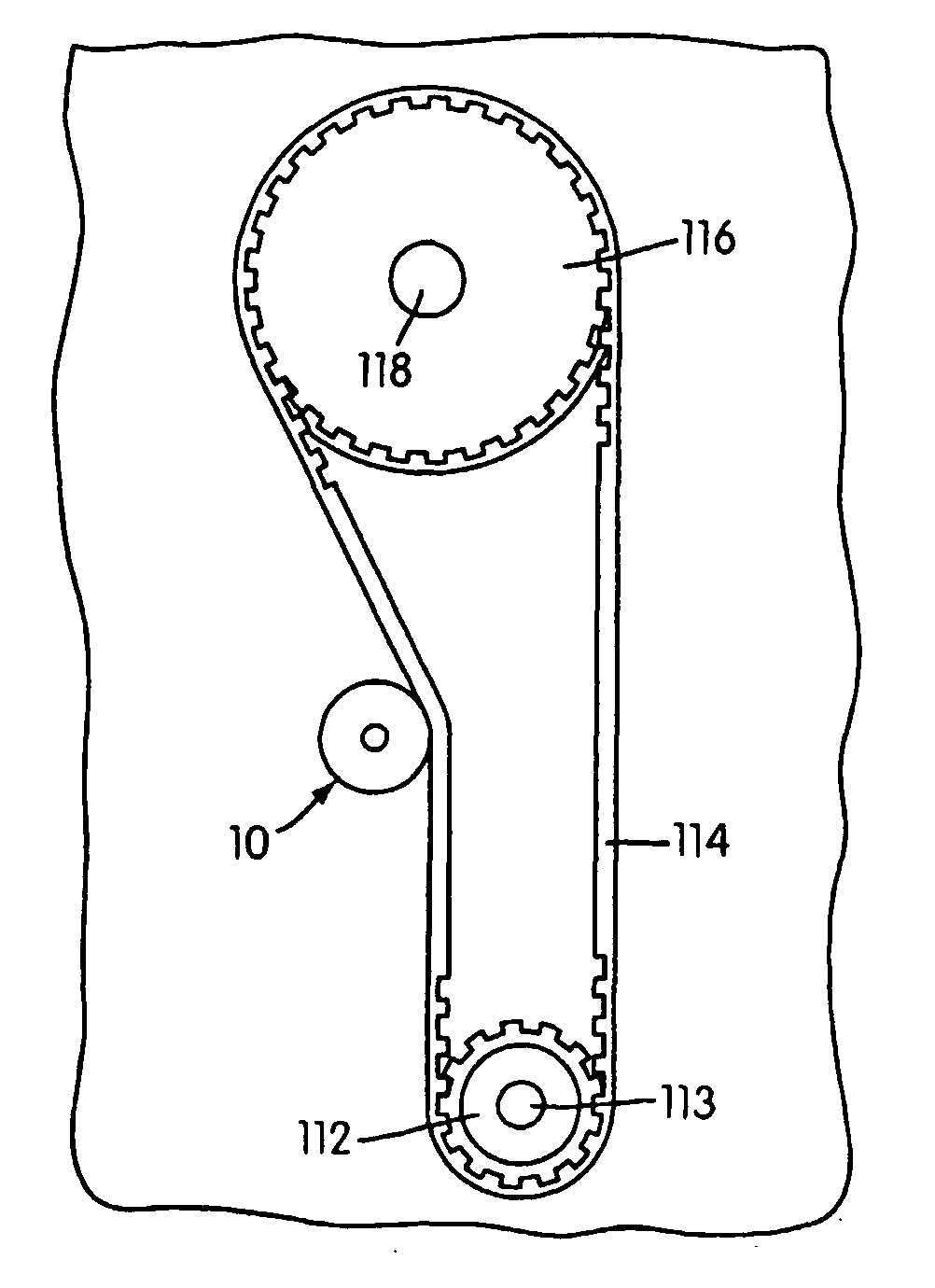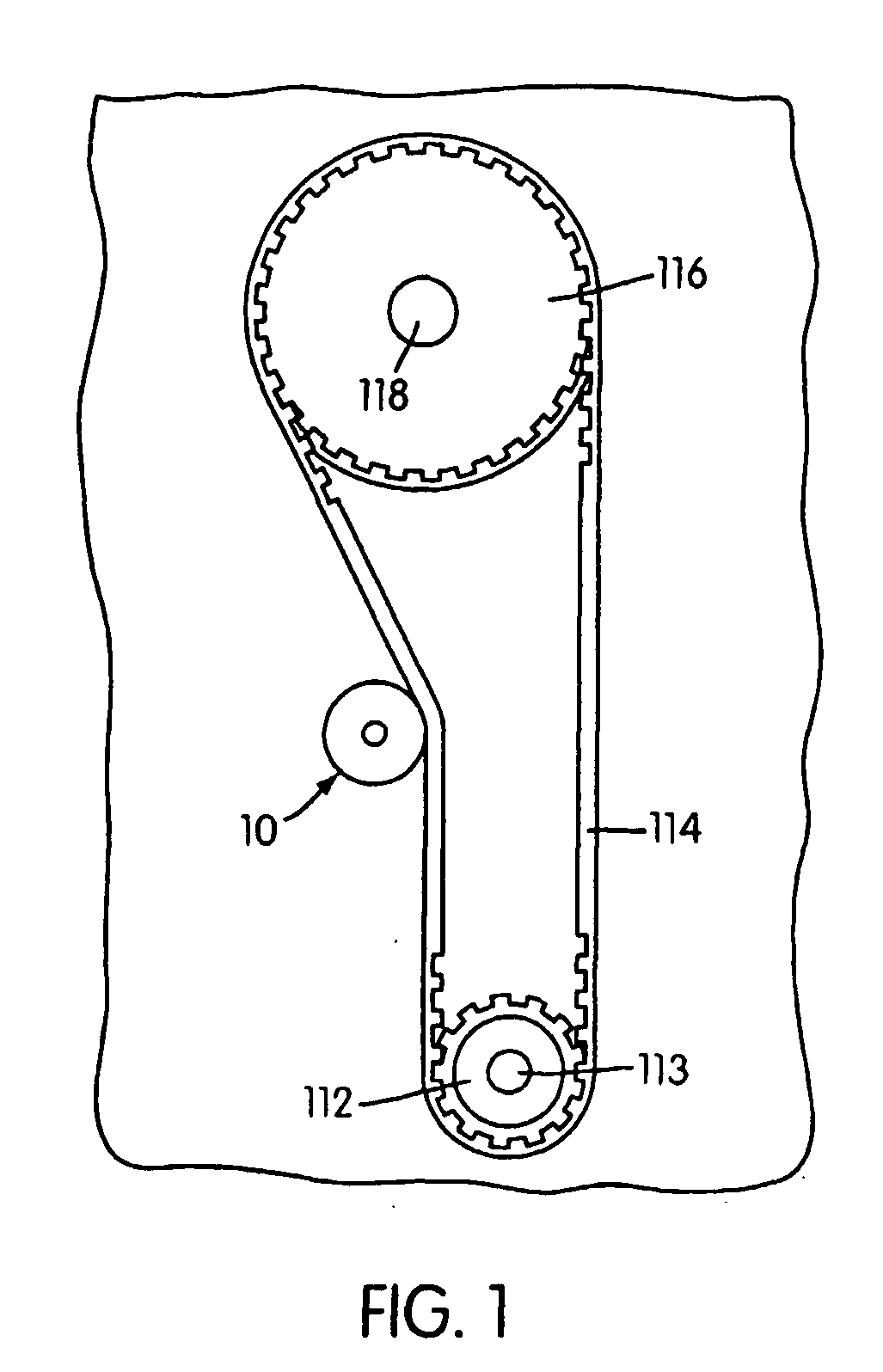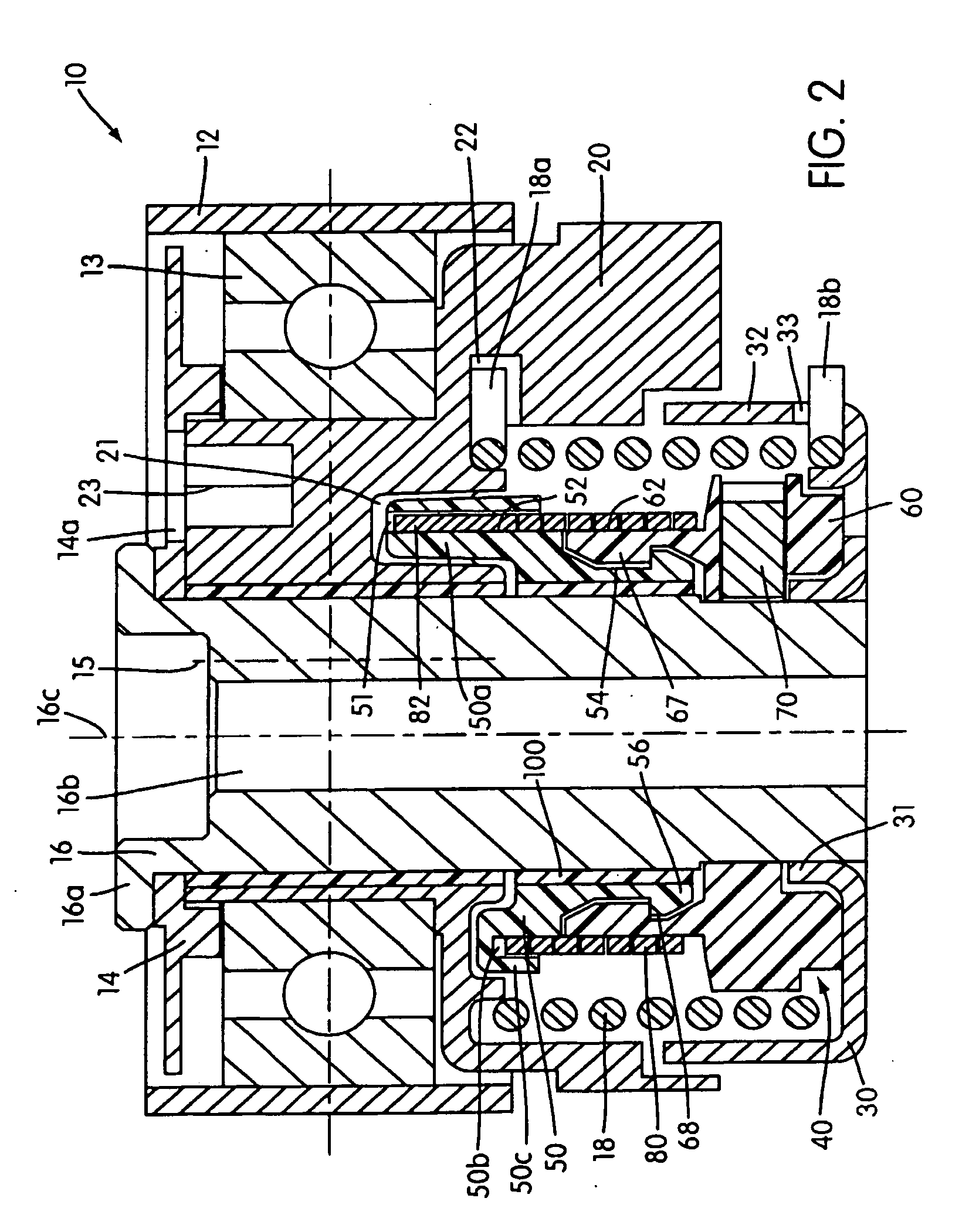Timing belt tensioner with stops controlled by frictional brake
a frictional brake and belt tensioner technology, applied in mechanical equipment, ropes and cables for vehicles/pulleys, gears, etc., can solve the problems of reducing the service life of the backstop, affecting the service life of the belt, so as to reduce manufacturing and installation time and cost, and facilitate installation. , the effect of simplifying construction
- Summary
- Abstract
- Description
- Claims
- Application Information
AI Technical Summary
Benefits of technology
Problems solved by technology
Method used
Image
Examples
Embodiment Construction
[0026] A timing belt system for an internal combustion engine is illustrated in FIG. 1. A toothed, pulley sprocket 112 is fixed to the crankshaft 113 of the engine, and an internally toothed belt 114 is driven by the sprocket 112. The toothed belt 114 is trained about (and hence drives) a second, externally toothed sprocket 116, which sprocket 116 is fixed to (and hence causes to rotate) a cam shaft 118 of the engine. A tensioner 10 according to the invention is mounted in tensioning relation with the belt 114.
[0027] As illustrated in FIG. 2, the tensioner 10 generally consists of a pulley 12 that is mounted on a ball bearing assembly 13 which extends circumferentially around a pivot arm 20, and the pivot arm 20 is eccentrically pivotally mounted on a pivot shaft 16, e.g., by means of a journal. In other words, the pulley 12 rotates around its own axis of rotation 15 extending through the center of the ball bearing assembly 13, and the pivot arm 20 pivots (with the pulley 12 pivoti...
PUM
 Login to View More
Login to View More Abstract
Description
Claims
Application Information
 Login to View More
Login to View More - R&D
- Intellectual Property
- Life Sciences
- Materials
- Tech Scout
- Unparalleled Data Quality
- Higher Quality Content
- 60% Fewer Hallucinations
Browse by: Latest US Patents, China's latest patents, Technical Efficacy Thesaurus, Application Domain, Technology Topic, Popular Technical Reports.
© 2025 PatSnap. All rights reserved.Legal|Privacy policy|Modern Slavery Act Transparency Statement|Sitemap|About US| Contact US: help@patsnap.com



